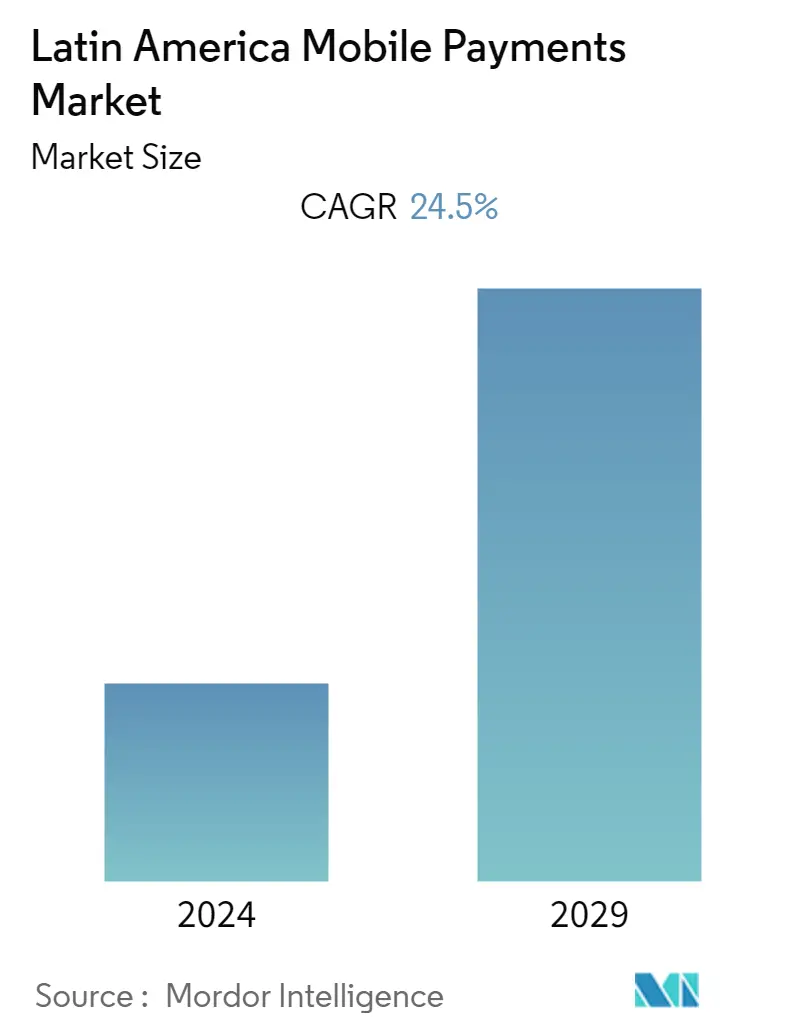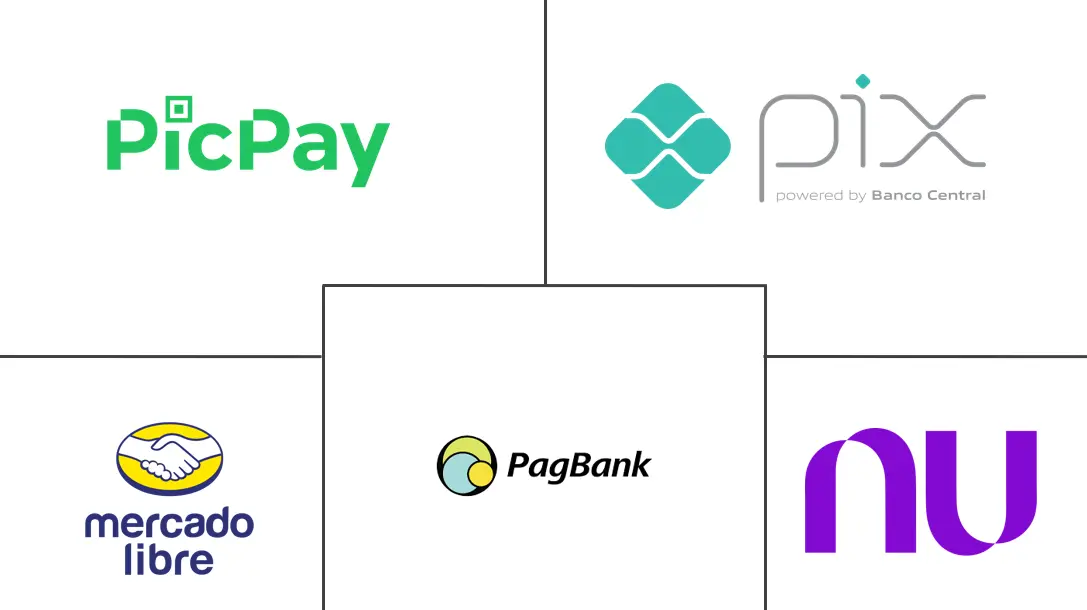Market Size of Latin America Mobile Payments Industry

| Study Period | 2019 - 2029 |
| Base Year For Estimation | 2023 |
| Forecast Data Period | 2024 - 2029 |
| Historical Data Period | 2019 - 2022 |
| CAGR | 24.50 % |
| Market Concentration | High |
Major Players
*Disclaimer: Major Players sorted in no particular order |
Need a report that reflects how COVID-19 has impacted this market and its growth?
Latin America Mobile Payments Market Analysis
Latin America Mobile Payment Market is expected to register a CAGR of 24.5% during the forecast period (2022 - 2027). The stores and services worldwide are rapidly moving towards adopting mobile payment applications, such as Mercado Pay, PayPal, Rappi and PicPay, amongst others to accept and transfer payments. With increasing internet penetration and rapid growth in online retailing, this trend is expected to continue over the forecast period.
- In recent times, mobile payment has been gaining traction in the Latin American region after the pandemic because of the increasing number of users of smartphones and the increasing penetration of the internet. Mobile payment is more convenient, secure, and easy to use than other modes of payment. This, along with the rising trend of mobile-based payment solutions, represents one of the major factors bolstering the market growth in Latin America.
- Rise of e-commerce in the region for Latin Americans, shopping online is a two-step process of buying items from a merchant online and then paying for them through cash-based alternative methods, such as boleto bancario (a type of bank slip) in Brazil or a voucher system handled through local convenience stores such as OXXO and 7-Eleven in Mexico, among others. As alternative payment methods gained traction over traditional modes, mobile payments became incredibly significant in the region.
- The market players are integrating mobile payment solutions with advanced technologies and biometrics, to enhance security and efficiency, which, in turn, influences the market growth. In addition, the growing number of online transactions due to the sudden spread of the coronavirus disease (COVID-19) and the thriving e-commerce sector is anticipated to strengthen the market growth.
- Despite many opportunities for vendors in Latin America, the region is still struggling with post-pandemic effects. Inflation was at 38% in Argentina in 2021 and is projected to go even higher in 2022 to 45%. Peru, Brazil, and Colombia have all experienced currency devaluations. However, GDP is projected to grow projections for 2022 in Argentina (3%), Colombia (4.2%), Peru (2.3%), and Chile (also 3%).
- The pandemic had a positive impact on Latin America's mobile payment industry, with increasing trends toward contactless payment positively influencing the market. For inIt'sce, during a survey conducted in Colombia, Brazil, Costa Rica, and the Dominican Republic in April 2020 by Mastercard, amidst the COVID-19 pandemic, around 84% of respondents said the contactless payment was a cleaner way to pay.
- Despite the benefits of Mobile payments growth, security is still a major concern. It's been estimated that as many as 20% of digital accounts created in Latin America were fake. Along with that, regulators face COVID-19-related staffing shortages and tremendous uncertainty. Mexico and Brazil are still trying to push through landmark fintech and open banking regulations, delayed by the pandemic. And the cost of infrastructure that comes with implementing mobile payment infrastructure has also posed as a challenge.
